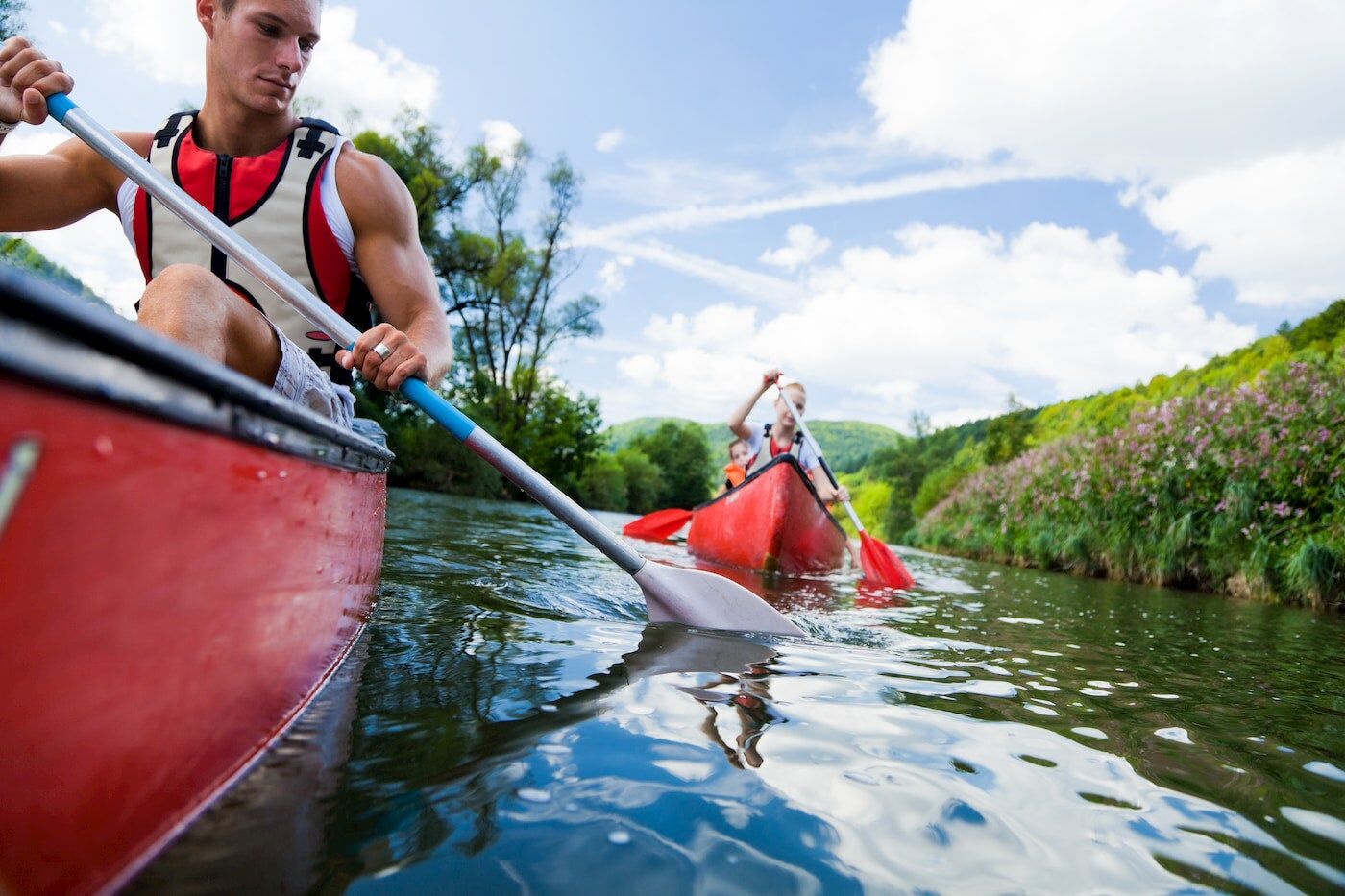“ Paddle, dear comrades, paddle. / Still a long way to end the day,” sings Zachary Richard… Adventure on the water is no longer just about the past. The canoe circuits are well listed today. Not in the mood for roaring rapids or demanding portages? You can rely on topographic maps and course directories, signed by professionals who have done their homework in the field. It’s up to you, therefore, to choose your routes according to your level, the time of year, and seasonal floods.
FROM BARK TO FIBERGLASS: THE CANOE EVOLVES
In the 1970s, fiberglass revolutionized the construction of canoes. Heavier than their “ancestors” made of bark, the new models are however more resistant and more durable. Holiday camps and outdoor bases then surf on this emerging wave and the initiation to canoeing begins. At the same time, many individuals also bought their own boats. Cottage and canoe, therefore, form a new equation.
VINYL-BASED CANOE: LIGHTER AND SAFER
Over the years, new technologies have made it possible to refine shapes and quality. The new canoes are molded in materials derived from vinyl. They are lighter, which allows them to be carried everywhere, and support increased loads. More stable and safer, they make sport accessible to everyone. Alone, as a couple, with the family… everyone can now enjoy the joys of canoe-camping.
As with all small pleasure craft, canoeing today is governed by strict regulations. Canoeists must wear their life jackets at all times and keep a lifeline on board, which they can throw if an occupant falls into the water. Times change, but the taste for adventure remains. From a means of transport, the canoe has become a source of pleasure and wonder in the calm of nature.
CHOOSE THE RIGHT CANOE UP AND DOWN
- Its length: it averages 16 feet. A longer canoe will sail faster, stay on the course more easily and allow you to carry more luggage, but it will be less maneuverable and also heavier during portages.
- Its width: is measured both at the waterline and at the opening of the gunwale. The wider the canoe, the more stable it is. The narrower it is, the easier it handles, to the detriment of stability.
- The shape of its hull: the flat bottom is stable in calm water and ideal for short getaways. The round hull, that of the specialized and shorter canoes, allows more speed. The third shell shape is a compromise between the first two. It is stable, therefore prevents capsizing while facilitating maneuvers in white water or in small rapids.
Which canoe is best for canoe camping? A 16-foot-long, medium-beam, mid-hull model. It will stay on course well and will not be influenced too much by crosswinds. You can load it without constraint and tackle level 1 and 2 rapids.
HOW TO LOAD YOUR CANOE?
You don’t leave with an empty canoe:
– The heaviest equipment will be placed in the center of the canoe. For example, cooler and food, tent and water supplies.
– Anything that is light and does not influence the fore/aft balance of the canoe, such as a change of clothes, will be deposited in the front or rear clips.
– Don’t forget that all equipment, whatever it is, must be held in place using cords or carabiners. You will appreciate it if you capsize. Straps with buckles also do the trick.
– To protect your equipment from the weather, pack everything in waterproof bags which, as a supreme advantage, float even when they are well filled. Are you making a short outing in calm waters? Opt for the good old green bag, which you will slip into your backpack before putting your equipment there. You will congratulate yourself on your foresight when you want to warm yourself with a “little wool” at nightfall.
THE PERFECT BOATER’S SURVIVAL KIT
– A multi-purpose tool such as Swiss Army MD or Leatherman MD
– Tie-wraps (Ty-Rap ® )
– Spare loops for backpack straps
– About ten meters of cord
– Some screws and nuts for adjustments and emergency repairs (seats, crossbar attachments, front/rear clamps cover)
– A sponge to dry the inside of the canoe
– A plastic bailer is attached to the canoe and is easy to access
– Duct tape, works wonders in all circumstances.
– A small washer of brass wire
– A spare paddle, especially if you canoe in a remote area.
CANOE CAMPING: THE BEAUTY OF NATURE
Boating gives you the peace and quiet of the great outdoors, away from the noise, fury, and lights of the city. If you practice it at 30 or 40% of your capacity, you will also develop your physical endurance. But don’t get carried away: you’ll be exhausted halfway through the course. Take a moderate and regular rhythm, and you will see, that you will forget the effort to concentrate on the beauties that surround you.
In the evening, around a fire, you will taste these privileged exchanges, as much with your companions of adventure as with the environment. Just thinking about it…
